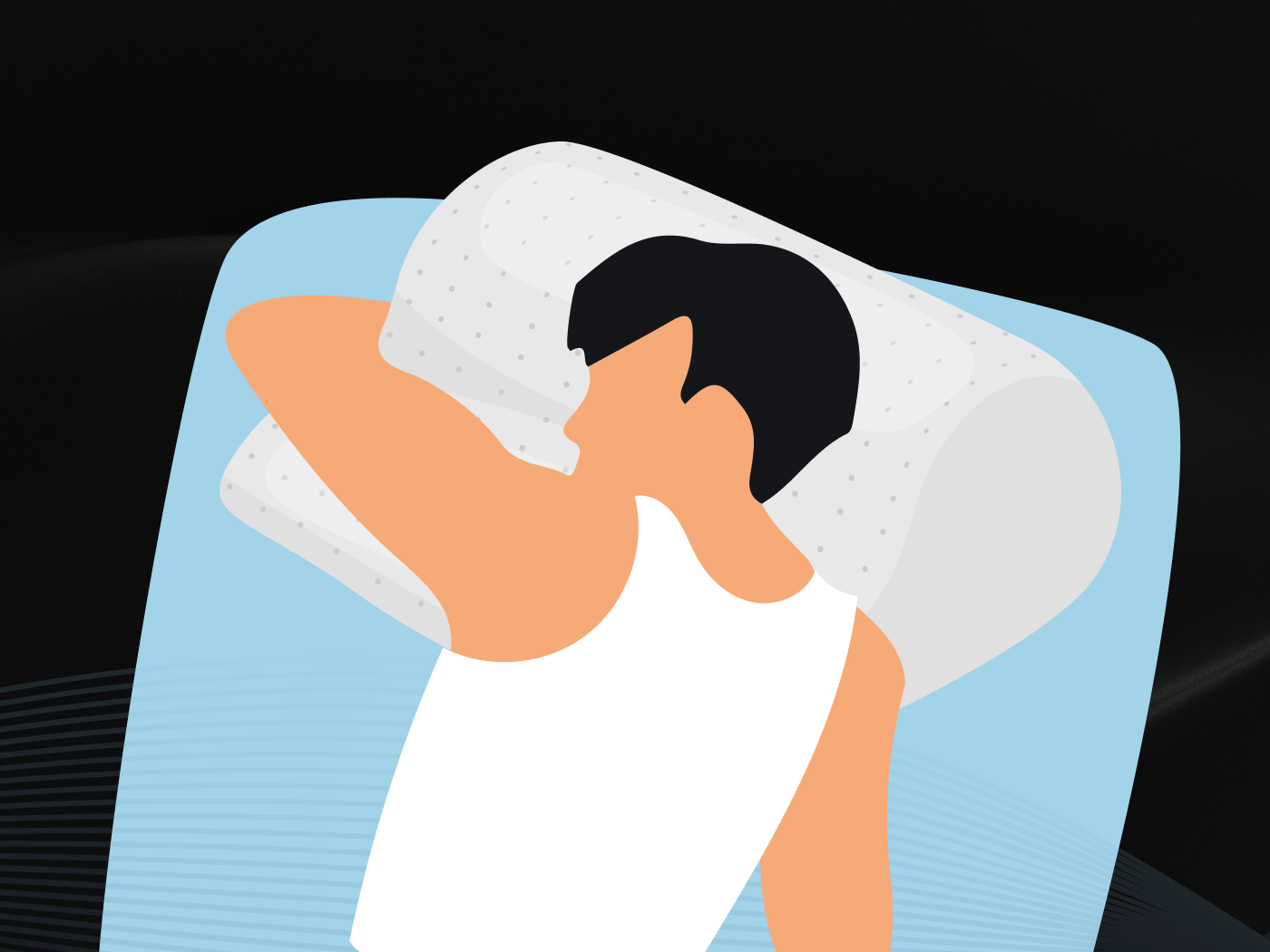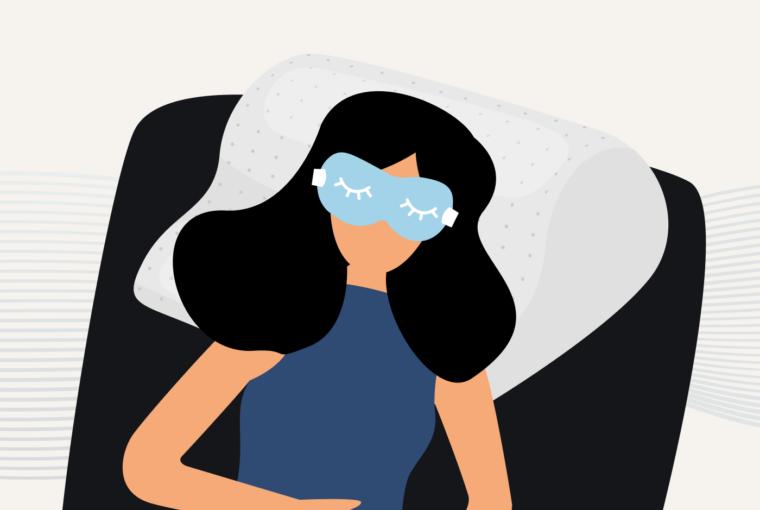- If you’re struggling with neck pain, it’s essential to find a comfortable sleeping position that allows you to get a good night’s sleep.
- While it depends on your specific cause of pain, sleeping on your stomach or your side are the best ways to sleep with neck pain.
- Checking your Oura Sleep Contributors — especially Restfulness and Efficiency — can provide clues about which position benefits your sleep quality.
Chronic neck pain affects between 16 and 75 percent of people. If you’re one of them, you know how difficult it can be to get comfortable in bed with a sore or stiff neck.
A sore neck can have a negative impact on your sleep quality, leading to other problems such as daytime sleepiness, difficulty concentrating, and low mood. And it can be a vicious cycle: Some research even suggests poor sleep quality can contribute to musculoskeletal pain — including neck pain — over time.
If you’re struggling with neck pain, it’s essential to find a sleeping position that allows you to get a good night’s sleep.
| Member Tip: In the Oura App, keep an eye on your Sleep Contributors — especially Restfulness and Efficiency — for clues into how a particular sleep posture affects your sleep quality. |
RELATED: 8 Popular Sleeping Positions and What They Mean for Your Health
The Best Sleeping Positions for Neck Pain
The best sleeping position to relieve your neck pain will depend on what’s causing your pain and which part of your neck hurts. However, in general, most people will find the most relief sleeping on their back or on their side.
Test out different positions and see what works best for you. Whichever you choose, the most important thing is to ensure your cervical spine is supported to maintain the natural curve of your neck.
Sleeping on Your Back
To help yourself stay on your back during the night, consider getting an orthopedic or memory foam pillow that offers built-in neck support.
You can also try placing a rounded pillow under your neck with a flatter, thin pillow under your head. This will provide support to your spine and minimize neck strain.
Additionally, it’s important to invest in a supportive mattress, as a too-soft mattress may not provide enough support for your back.
RELATED: How to Choose the Best Bedding for a Better Night’s Sleep
Sleeping on Your Side
Side sleepers should also choose the right pillow to ensure maximum neck support. As with sleeping on your back, you’ll want to ensure your pillows are higher under your neck than under your head so your neck muscles can relax.
Ideally, your pillow should be a height that keeps your ears stacked vertically over each other. If your pillow is too high or too low, your neck will bend, and you may develop pain.
Also, it’s a good idea to keep your chin in a neutral position — avoid tucking it, as this brings your neck out of alignment with the rest of your spine. For better alignment through your lower back and hips, try placing a pillow between your knees.
READ MORE: The Best Sleeping Position for Lower Back Pain
The Worst Sleeping Position for Neck Pain

Bad news for stomach sleepers: this is the worst position for neck pain because it forces you to turn your head to one side or the other, preventing you from keeping your spine aligned.
Additionally, sleeping on your stomach with too many pillows can cause you to overextend your neck and upper back, which can contribute to more neck pain. If this is your go-to position, it might not be easy to change.
Try falling asleep in a back or side sleeping position to encourage your body to spend at least part of the night in a more neutral sleeping posture, even if you move while you’re sleeping.
RELATED: Why Do I Sleep With One Leg Bent Up? The Half-Stomach Position
4 Tips for Neck Pain Relief
Try these pain-relieving strategies alongside adapting your sleeping position to get a better night’s sleep.
1. Stretch it out.
Gentle neck stretches before you go to bed and first thing in the morning can help alleviate neck pain during the day and during the night.
2. Try hot and cold therapy.
If you strain your neck either during the day or while sleeping, apply an ice pack straight away to limit any swelling that may occur.
Heat therapy — either as a hot bath or shower or in the form of a heat pad — can help stiff muscles relax, which may also provide relief from a painful neck.
RELATED: Sauna & Sleep: A Winning Combo?
3. Consider physical therapy.
A physical therapist can assess your neck pain and provide you with tips and exercises to improve your posture as you move through your day.
Learning to use your muscles in proper alignment can reduce the mechanical stress that sometimes causes neck pain.
4. Take an over-the-counter pain reliever.
Over-the-counter pain-relieving and anti-inflammatory medications — such as ibuprofen — can help you manage your neck pain.
| Member Story: After a mountain bike crash, Hannah P. saw that her Oura Readiness Score plummeted the morning after, encouraging her to realize her body needed more time to heal. |
When to See a Doctor for Neck Pain
The causes of neck pain vary from person to person, and, in most cases, adjusting your sleeping position and trying some of the tips mentioned above can provide relief.
However, it’s important to seek medical advice from your healthcare provider if you experience any of the following symptoms:
- Pain that’s accompanied by loss of motion or weakness
- Pain associated with an injury
- Sudden severe pain with no obvious cause
- Neck pain with other unexplained symptoms, like pins and needles in your arm
- Persistent neck pain that is disruptive to your day-to-day life and prevents you from getting a good night’s sleep for more than a week




